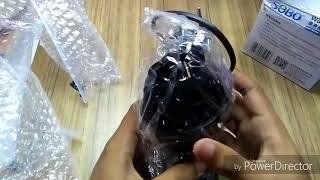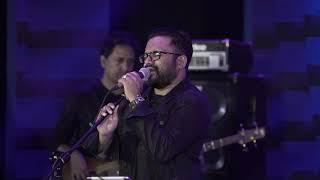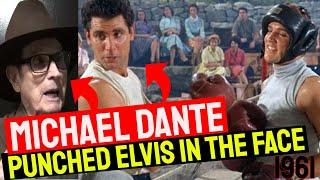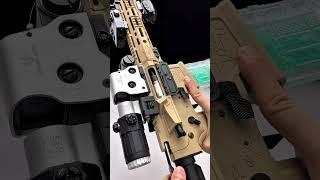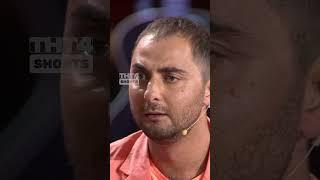Комментарии:

30fps is video. 24fps is old style film camera
Ответить
After seeing this video for me definitely the 30fps looks so much smoother that the 24fps for vlogging type videos and content. I will be switching to 30fps now instead of the 24. Thanks again great video.
Ответить
The reason your wife got dizzy with the 24p is probably because the two shots were not remotely similar. In one, you were flailing the camera all over the place and in the other, not so much.
Ответить
I purely an amateur but to me 30 is better, 24 just gives the micro jitters, because of the refresh rates, 30 just plays so much smoother, when played on auto refresh devices love the videos👍
Ответить
“Whatever fucking one you like….It’s YOUR fucking movie! Just tell a good story and don’t serve me pink chicken.”Larry Leahy,my filmschool directing teacher.
Ответить
Back when I was shooting weddings late 90s early 2000s.Basically, it was all 30P really hasn't been till The last several years that people have started to go to 24 frames with the newer cameras
Ответить
120 fps is the best one since renders at 24, 30 and 60 fps have equal frame skippings. jk! I just own a gopro.
Ответить
I would like to see a comparison between 25 and 24 fps, because I come from a PAL country, and for me with a DSLR, I use the same shutter speed of 1/50 because I can't get 1/48. I can use 30 fps, but in PAL countries it will cause the light to flicker becauae our electricity is 50hz
Ответить
Jeven, do you shoot in drop frame or non-drop frame? I come from a broadcast background and know that most people aren't that concerned with the extra seconds, but have you discovered visually any advantages or disadvantages? Also can you shed insight into the differences between 1080 60i vs 1080 30p. I understand the difference between interlaced or progressive, but editing and effect wise can you lend some insight? And to answer your question, 24 fps will give more of a film texture or grain and may work, but it appears that the jitter may be too much of a compromise. Your advice would be greatly appreciated. Thanks!
Ответить
I know this is an older video, but thanks for sharing! I think I've decided on 30fps. And in videos that I want a slow-mo cinematic look, I'll still shoot in 30fps and slow it down to 24fps and export it at 24fps. But that means non slo-mo video clips would have to be in 24fps so that would be the dilemma there.
Or I would use 60fps for slo-mo and slow those down at 30fps... but thing is I wouldn't always want to slow down at 50% speed.

For action, 60fps, because I do put in some slo-mo. For podcast, 30 works.
Ответить
Neither. 60fps minimum. We have been gaming over 240fps on 240hz monitors for years now.... When can the old ways die already? Soap opera complainers are weak.
Ответить
A little off topic, but as far as memory and file sizes go, would a video that is 60fps be twice the file size of a 30fps video?
Ответить
I will only use 24 frames for static videos or interview videos. Because of the rattling and disconnection and confusion.. the rest of the videos will be taken in 30 frames.
Ответить
The blurr depends more on shutter speed than frame rate. No? 24fps has less "data" than 30fps - so if there is fast movement, 24fps should be more jitterish due to missing data between 2 adjacent frames. But perhaps the blurring would compensate for the jitter, visually? Or even the blurr also appears jittery?
Ответить
Why not shoot at 30 fps and drop it into a 24 fps- Timeline? I shoot 30 fps all my videos, and at 120 fps if I need slow motion. But 30 fps transformed into 24 fps works fine.
Ответить
Thank you
Ответить
Great great video!
Ответить
Nice stuff! And what about the camera freq? I set my lumix to 24hz because states CINE, the others are PAL and NTSC..
Ответить
I like videos like this where the host actually acts mature and stays focused.
Ответить
Thank you for your production and time
Ответить
first time shooting in NTSC. for wedding ceremony and speeches (talking scenes) would 30p be fine? As I want to also shoot in 60fps and 120fps for slow mo, which would cut better on a 30p timeline than 24p?
Ответить
Just use 60fps duhh
Ответить
what about 59.94 fps? When should one use it?
Ответить
❤
Ответить
what are the sequences you r working on? 24p and 30p accordingly?) the footage with 24p looks like you work in 30p sequence
Ответить
24 always
Ответить
Thank you for this video!
I've been struggling with this decision. After watching this video, it'll be no-brainer to go 30fps!

Excellent video! I can't apply the 25/50 or 30/60 rule...because where there is a lot of light the image burns out...even by closing the shutter or the ISO to the minimum.
Ответить
I had a problem with jerking like pulses to one side when panning...filming at 25fps...I mentioned it on a video makers page and they told me to change to 60...I changed to 30 and it improved a lot...I clarify that I have 230 V and 50 Hz on the line
Ответить
Thanks man! 🙌🏼 Really helpful... I was in a dilemma but now I will just have to throw my camera into the wall first! 😅
Ответить
30 FPS would be more for say, TV commercials?
Ответить
Interesting.
Please sort out the legend at the bottom of the comparison shots - they are right underneath your logo on macbook.
Coming from a photo background and just venturing into video - you're going to be a LOT smoother with 30p but the difference in shutter speed is minimal like you say.
Your panning shot in 24p - I can see a freeze frame twice per second from the mismatch of 24/50. Probably not what you're looking to show.
I think video guys shouldn't take the 180 degree as a rule - but a starting point - just as I want to stretch motion blur in the rain, crisp up low movement footage or increase dynamic range in the dark if I want to.
Departure from the norm should serve a purpose such as making slowed down footage stay smooth.
As for the choice between 24 and 30 fps - 24's days are numbered IMHO.

In my camera there is no 24 or 30 fps. There is 23.98 and 29.97
Ответить
AMAZING!
Ответить
What about monitor frequency ?
Ответить
excellent explanation! great videos
Ответить
Jeven you are one of the best Tubers on Drones out there for sure, I have learned a lot watching your videos Thanks Ike!
Ответить
so im trying to look more cinematic for my videos using the new dji action pro 5
I'm reading that I should use 24 fps rather than 30+
I'm a noob so this is a noob question, I thought using a lower fps would mean its more choppy as its not getting as many frames in, vs being realistic
I just want to achieve a warm, soft, feel to my videos, a24 aesthetic film

Its all about how human eyes sees things different genius😂😂
Ответить
I totally agree to stick with one base timeline. For me it is 30fps so I can use 30/60/120p. Have you tried 1/50 on 30p and 1/60 on 60p even though it means ignoring the 180 rule?
Ответить
Came for the discussion about frame rates. Stayed for the footage of the baby in the bubbles. Your daughter is adorable, dude.
Ответить
Forget about 24 fps and the 180 "degree shutter rule". Both were due to technical limitations of the past. As for the 180 rule, it's not scientific nor is it based on psychophysics of the retina and brains. It's a rule of thumb which was usefull for 24 fps on film. It's basically useless for digital cameras.
Why?
Because there is a more important rule. This rule states to minimize the lack of information between individual frames. If both frames have moving objects and both objects have so much motion blur that there is no lack of information between frames because the motion blur of adjacent frames "smears into each other" the result will lock neither choppy nor jittery. Filming at 24 fps and 1/50 s will create some lack of information between frames, as 1/50 s of scene information is missing. But only if objects move so fast in the frame, that their bluriness doesn't overlap sufficiently. In that case the moving object or part of the scene appear jittery. The phenomenon is not limited to panning shots, but is pertinent to any fast moving part of the image. Playing a 24 fps video on a 60 Hz display will cause additionnal trouble if the scene or big objects move.
If two stationary alking heads are filmed using 24 fps, the movement is minimal and there is therefore a minimal amount of lack of information between frames, so the result will not appear jittery and will be pleasant to the eye.
But in action sports, if it's important if a hand touched a ball in a socker game, the amount of motion blur must be reduced. However, if both frames are filmed with a very short shutter speed (like 1/500 s) but the frame rate stays at 24 fps, there will be a lot of information missing between two adjacent frames. The image will appear choppy. In theory, this problem could be overcome if the fps was raised to 500 fps and shown on a device able to be refreshed at 500 Hz. The human eye will perceive the result as natural looking (the temporal resolution of peripheral vision is between 100 to 120 Hz, whereas the central vision is around 70 Hz for very strong luminance contrast between frames). But since most computer screens refresh at 60 Hz anyway, frame rates of 60 fps should be sufficient, as long as the exposure time is chosen in such a way that it minimizes the lack of information between frames. The best way to use a 60 Hz display is therefore to shoot at 60 fps using a shutter speed of 1/60 s, as there will be no information left out between frames and the image will look both crisp and natural. Only highly sensitive persons might still see some jitter if objects featuring a high black-white contrast (or RGB contrast, but the visual pathways of the brain differ and RGB isoluminant contrast is slighly less important) are moving very quickly across the screen.
So I hope one day people will abandon their belief system which states that only video filmed at 24 fps resulting in jittery movement artefacts are "cinematic".
Try filming in 60 fps using 1/60 s of a second, the result will still have the same motion blur in the individual frames as if it was filmed with 24 fps and 1/60s, so moving stuff will appear smooth, but 60 fps will have the advantage that panning shots or any scene with contrasty moving objects will appear smooth and there shouldn't be any playback problem on 60 Hz or 120 Hz displays.

24p is better when the camera is not moving only the subject
Ответить
Thanks you this was very helpful to clear some confusion. I have a fish keeping channel and i am whet looks best. Subbed. Thanks supporting you from my channel , joy of fish keeping
Ответить
Wouldn’t 30 FPS at 1/48 Shutter speed BE THE EXACT SAME as 24 FPS at 1/48 (motion blur) ?
Ответить
When you watch my two samples side by side can you see a difference between 24 and 30? Which one do you actually think looks better?
Ответить





